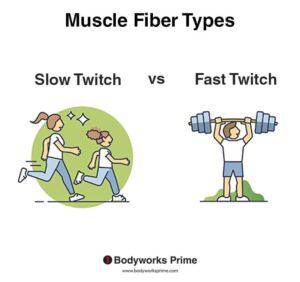
Adolescence is a remarkable chapter in a young person’s life, filled with growth, discovery, and boundless energy. It’s a time when bodies are evolving, and with the right guidance, adolescents can harness their physical potential to not only excel in sports but also lay the foundation for a lifetime of health and wellness.
The development of speed, agility, and quickness in youth sports is paramount as it not only enhances athletic performance but also reduces the risk of injuries and lays the foundation for a lifelong commitment to physical fitness.
In this blog, we’ll embark on a journey into the world of adolescent speed, agility, and quickness (SAQ) training, exploring the science, techniques, and benefits that can empower young individuals to thrive in their chosen activities and lead active, vibrant lives. Whether you’re a parent, coach, or an adolescent eager to boost your performance, this resource aims to provide valuable insights into optimizing your SAQ potential.
Table of Contents
- How do we Define SAQ?
- How do Muscles and Their Fiber Types Affect SAQ?
- How to Train Different Muscle Fiber Types to Improve SAQ
- Is Sport-Specific Training Important for SAQ?
- Rest intervals for SAQ Training
- Reaction Time Training for SAQ
- How does SAQ Training Reduce Risk of Injury and Increase Performance?
How do we Define SAQ?
Speed: how quickly you can move in a straight line from one point to another. It’s a combination of stride length (how long your steps are) and frequency (how often you take steps) and is vital in sports like sprinting, soccer, and basketball.
Agility: the ability to change direction quickly and effectively. It involves coordination, balance, and reflexes and is essential in sports like tennis, football, and martial arts.
Quickness: how rapidly you can react to a stimulus or situation. It’s a blend of mental alertness and physical response time and is crucial in sports like baseball, boxing, and even activities such as driving.
How do Muscles and Their Fiber Types Affect SAQ?
Muscles are extraordinary tissues, exhibiting diverse types to fulfill various functions. One key distinction lies in muscle fiber types, which can be broadly categorized into two main groups: slow-twitch (Type I) and fast-twitch (Type II) muscle fibers.

Slow-Twitch (Type I) Muscle Fibers are the endurance champions of our muscles. They are built for long-haul activities, where sustained effort is required. These fibers are well-suited for activities like jogging, cycling, and maintaining posture. They have a rich blood supply, which means they receive a continuous flow of oxygen and are highly resistant to fatigue. This allows them to function for extended periods without tiring easily. Slow-twitch muscle fibers are known for their red color due to the presence of myoglobin, a molecule that stores oxygen. This oxygen reservoir enables them to generate energy aerobically, making them efficient for activities that demand endurance.
Fast-Twitch (Type II) Muscle Fibers are the sprinters and powerlifters of our muscles. They are designed for short bursts of intense effort. These fibers can contract rapidly and forcefully, making them ideal for activities like sprinting, weightlifting, and jumping. Unlike slow-twitch fibers, they have fewer blood vessels and less myoglobin (a protein that binds to blood), which means they rely on anaerobic metabolism, producing energy without oxygen. The drawback to this mechanism is that it comes at the cost of quicker fatigue.
Fast-twitch fibers can further be divided into two subtypes: Type IIa, which offers a balance between endurance and power, and Type IIb, which is optimized for brief, explosive efforts but tires quickly (i.e. max vertical jump).
Understanding the interplay between these muscle fiber types is crucial in sports training and rehabilitation, as it allows for the development of tailored training programs to optimize performance and achieve specific fitness goals.
How to Train Different Muscle Fiber Types to Improve SAQ
Training different muscle fiber types involves tailoring your workouts to target specific muscle characteristics mentioned above. Whether you’re aiming to enhance endurance with slow-twitch fibers or build strength and power with fast-twitch fibers, a well-rounded fitness regimen can help you achieve your goals.
To effectively target slow-twitch muscle fibers, focus on the following strategies:

- Endurance Activities: Engage in aerobic exercises like jogging, swimming, or cycling for extended durations. These activities provide a continuous workload that slow-twitch fibers excel at handling.
- Moderate Intensity: Maintain a moderate intensity during endurance training. This means working at a pace where you can maintain steady breathing and conversation without gasping for air.
- Long Workouts: Opt for longer workout sessions to fatigue slow-twitch fibers. Consider gradually increasing the duration of your workouts over time to build endurance.
- High Repetitions, Low Resistance: In strength training, choose high repetition, low resistance exercises such as bodyweight exercises, yoga, or lightweight resistance bands. This approach encourages slow-twitch fiber engagement.
To unlock the capabilities of fast-twitch muscle fibers and enhance explosive strength, integrate the following strategies.

- Resistance Training: Prioritize resistance training with heavier weights and lower repetitions. Compound movements like squats, deadlifts, and bench presses are excellent choices to engage fast-twitch fibers.
- Plyometrics: Plyometric exercises, including box jumps, squat jumps, and medicine ball throws, are highly effective for activating fast-twitch fibers. These exercises involve rapid and powerful muscle contractions.
- Sprint Training: Integrate sprinting into your routine. Short, high-intensity sprints, whether on a track or uphill, challenge fast-twitch muscle fibers and improve speed.
- Explosive Drills: Agility ladder drills, agility cone drills, and quick lateral movements engage fast-twitch fibers, enhancing agility and responsiveness.
As you can likely tell by the above recommendations, type II muscle fibers play a very important role in building speed, agility and quickness in an athlete. Depending on your goals, you can adjust the ratio of endurance to strength and power training.
Additionally, remember that genetics play a role in your muscle fiber composition, but consistent training can optimize the performance of both types, supporting the desire to be a well-rounded athlete.
Is Sport-Specific Training Important for SAQ?
 Sport-specific training is a tailored approach to enhancing an athlete’s performance in their chosen sport. It recognizes that different sports demand distinct movement patterns and physical attributes. The main pillars include:
Sport-specific training is a tailored approach to enhancing an athlete’s performance in their chosen sport. It recognizes that different sports demand distinct movement patterns and physical attributes. The main pillars include:
- Identifying Key Movements: To begin sport-specific SAQ training, it’s crucial to identify the key movements and demands of the sport in question. For example, a basketball player needs quick lateral movements and explosive jumps, while a soccer player relies on agility, sprinting speed, and rapid change of direction. By understanding these sport-specific requirements, athletes can tailor their training regimen accordingly.
- Targeted SAQ Drills: Once the specific demands are identified, athletes can incorporate SAQ drills that mimic the movements encountered in their sport. Basketball players might focus on cone drills for agility and vertical jump exercises for explosiveness. Soccer players might emphasize ladder drills for footwork and sprinting drills for speed. Tailoring SAQ exercises to the demands of the sport helps athletes develop the precise skills required for success.
- Enhancing Decision-Making: SAQ in sports isn’t just about physical prowess; it’s also about cognitive processing. Athletes must make split-second decisions during games, reacting to opponents and situations. Therefore, sport-specific SAQ training should include drills that challenge decision-making and reaction time. This might involve incorporating game-like scenarios into training sessions to simulate real match conditions.
- Periodization and Recovery: As with any training program, periodization and recovery are vital components of sport-specific SAQ training. Athletes should structure their training cycles to peak at the right times during the competitive season. Adequate rest and recovery are essential to prevent overuse injuries and optimize performance.
By understanding the unique demands of their sport, tailoring SAQ drills, enhancing decision-making, and prioritizing recovery, athletes can maximize their SAQ abilities and gain a competitive edge on the field or court. A physical therapist can help guide athletes in achieving their SAQ goals while minimizing the risk of injury, ensuring they perform at their best when it matters most.
Rest intervals for SAQ Training
Proper rest intervals during Speed, Agility, and Quickness (SAQ) training are a crucial factor in achieving optimal results and differ from the mindset used during strength and power training. These intervals provide the necessary recovery time for muscles to regain their energy and ensure that each SAQ drill is performed at its highest intensity. Shorter rest intervals, typically around 30 seconds to one minute, are suitable for drills focused on explosive bursts of speed and agility, helping to simulate game-like conditions. In contrast, longer rest periods, ranging from one to three minutes, are essential for drills targeting muscular endurance, allowing athletes to maintain their performance quality throughout a session. Striking the right balance in rest intervals is key to effective SAQ training, ensuring that athletes enhance their speed, agility, and quickness while minimizing the risk of fatigue-related injuries.

Reaction Time Training for SAQ
Integrating reaction time drills into SAQ training has the potential to significantly impact athletes aiming for excellence in their chosen sports. These drills not only enhance physical abilities but also sharpen cognitive skills crucial for rapid decision-making during competition. Reaction time exercises often involve responding to visual or auditory cues, mirroring the unpredictability of real-game situations. By regularly practicing these drills, athletes can improve their ability to react swiftly to changes on the field or court, giving them a competitive edge. Incorporating reaction time training alongside traditional SAQ exercises fosters a holistic approach to athletic development, enhancing both physical prowess and mental acuity.
How does SAQ Training Reduce Risk of Injury and Increase Performance?
SAQ training emphasizes the development of dynamic strength and mobility, enhancing an athlete’s ability to move efficiently and with better control.
By increasing the strength of muscles around joints and improving mobility, SAQ training creates a more stable foundation for movements, reducing the likelihood of sudden strains or sprains during high-intensity activities.
Furthermore, SAQ training hones an athlete’s proprioception and spatial awareness, which are vital for injury prevention.
Improved proprioception enables athletes to better perceive their body’s position in space, making it easier to maintain balance and react agilely to changes in terrain or opponent movements.
This heightened awareness minimizes the chances of tripping, falling, or colliding with others during sports activities.
SAQ training enhances an athlete’s speed, agility, and quickness, providing a competitive edge. The development of these attributes allows athletes to accelerate more rapidly, change direction with precision, and respond swiftly to game-specific situations. As a result, athletes are better equipped to outmaneuver opponents, seize opportunities, and perform at their peak, ultimately contributing to improved overall performance.
Bottom Line
SAQ training not only elevates an athlete’s performance but also significantly reduces the risk of injuries by fortifying the body’s physical and cognitive foundations. It empowers athletes with the tools needed to move with greater control, agility, and speed, ensuring that they can meet the physical demands of their respective sports with reduced susceptibility to injury. Consulting with a physical therapist can help you design a tailored program to suit your specific needs and aspirations.
Jessica Hiestand DPT, CSCS

This post was written by Dr. Jessica Hiestand in October of 2023.
Learn more about Jessica on our about page: https://gopt.co/people/jessica-heistand/